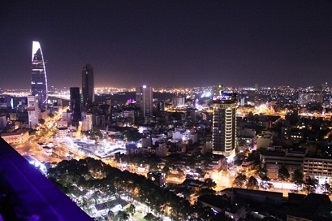People-to-People Exchanges and Empowerment in ASEAN <2>
What is ASEAN really like? JF staff on the ground share their latest insights
Articles from Myanmar, the Philippines, Singapore, Thailand, and Vietnam
2024.5.02
【Special Feature 081】
Special Feature: People-to-People Exchanges and Empowerment in ASEAN
(for summary on special features, click here )
In 2023, we celebrated the 50th year of ASEAN-Japan Friendship and Cooperation, and the Japan Foundation hosted a variety of associated events and workshops.
You might be wondering which countries are members of ASEAN, what the culture of each of those countries is like, and what is going on there lately. If you think about it, there are probably a lot of things you don't know.
We would like to take this opportunity to introduce the latest developments in ASEAN, our neighbors we may know little about, along with some personal stories from Japan Foundation staff working in the region.
What is ASEAN?
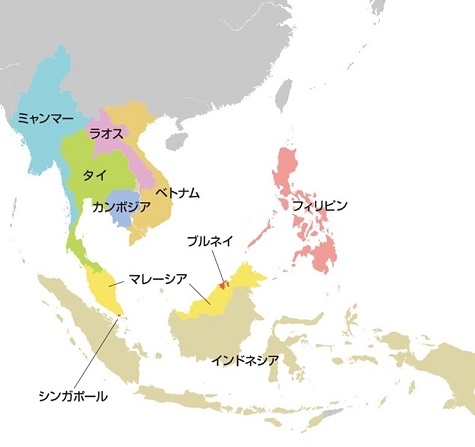
ASEAN (Association of Southeast Asian Nations) is a regional community that currently consists of ten member states.
The Japan Foundation has offices in eight of those countries and is deepening exchange with them.
See Articles from Brunei, Cambodia, Indonesia, Laos, and Malaysia here
Republic of the Union of Myanmar

Area:
676,590 km² (approximately 1.8 times the size of Japan)
Population:
Approximately 53,550,000 (2021 estimate)
Capital city:
Nay Pyi Taw
Political system of government:
Presidential republic *Regime prior to the coup of February 1, 2021
Main languages:
Burmese (official language), Shan, Karen, etc.
Main religions:
Buddhism, Christianity, Islam, Hinduism, animism, etc.
Currency:
Kyat
Geography:
Myanmar is located in the westernmost area of ASEAN countries, and is bordered by China, Thailand, Laos, India, and Bangladesh. The country is long from north to south, bisected by the mighty Ayeyarwady river, and the climate varies considerably from region to region. Snow-capped mountains can be seen in the north, which is near the Himalayas, while the south is on the Malay peninsula and features beaches with sparkling white sands. The land is also blessed with natural resources such as natural gas, base metals, and gemstones including rubies and jade.
History:
Various dynasties flourished in Myanmar from the ninth century onward, but later the country became a British colony in the late 19th century, and was temporarily under Japanese rule during World War II. In 1948, the country gained independence from the UK, but its economy stagnated thereafter due to the promotion of Burmese-style socialist economic policies and subsequent economic sanctions imposed by various countries against the military regime. When the country began to transition from military rule to democracy in 2011, its economy grew significantly. However, a coup d'etat in 2021 left the country once again under military rule. The former name of Burma was changed to Myanmar in 1989.
Major industries:
Myanmar is an agricultural nation where about half of the working population is engaged in some type of farming. Major exports include clothing, natural gas, rice, beans, and base metals and ores.
Relations with Japan:
During World War II, Aung San (father of Aung San Suu Kyi), the leader of Myanmar's independence movement, led an anti-British struggle for independence with the support of the former Japanese military. Japan, which had occupied Myanmar for a period of time, provided various economic assistance after the war, but drastically curtailed its support after the military coup in 1988. After the transition to democratically elected rule in 2011, Japan resumed economic assistance and many Japanese companies began to operate in Myanmar, but since the political upheaval in 2021, only humanitarian assistance has being provided via international organizations and NGOs.
Highlights of Myanmar:
As told by locally-based Japan Foundation staff
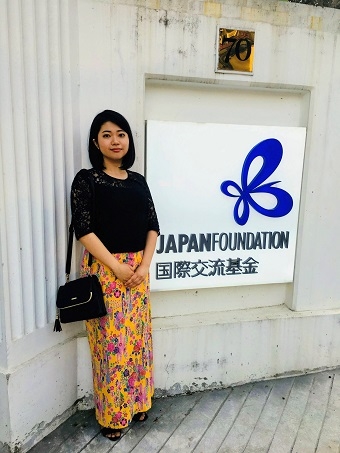
Speaker: Shimozato Hinano, staff member
After majoring in the Burmese language in university, she had the experience of studying abroad in Myanmar. She has been working in Myanmar for 8 months as a Japan Foundation staff member.
Myanmar today is unstable, but there is a strong spirit of helping one another, and traditional culture is alive and well
The current situation in Myanmar is very complicated. After transitioning to democracy in 2011, Myanmar received a lot of attention as "Asia's final frontier," and many Japanese companies began operating in the country with high expectations for future economic development. However, the situation has changed drastically since the military coup in 2021, leading to tremendous social turmoil and making it difficult for foreigners to travel to Myanmar.
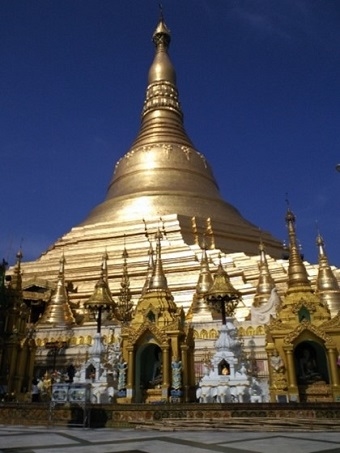

Myanmar has been unstable recently, and unfortunately there is not much good news to share on that front, but the true nature of Myanmar is a wonderful country overflowing with compassion. Myanmar's ranking in the World Giving Index is symbolic of this. Despite the fact that Myanmar is not an economically rich country, it has been ranked number one in the world many times. Life in Myanmar, a developing nation, is by no means easy, but if you are in trouble, someone will help you more often than not, and I myself have been saved many times by the kindness of the people of Myanmar. I don't think it is an exaggeration to say that Myanmar society is supported by people's spirit of mutual aid.
With as many as 135 ethnic groups that are believed to have originally lived in Myanmar, as well as people with Indian and Chinese roots, Myanmar has a diverse mix of ethnicities. In addition to the fact that many people cherish their traditional culture, the fact that Myanmar has developed more slowly than other countries and that there used to be little exchange with foreign countries are said to be related to the fact that people from such diverse backgrounds have preserved their own traditions in their daily lives. Even in urban areas such as Yangon, there are many people who wear the traditional longyi, a wrap-around skirt, on a daily basis.
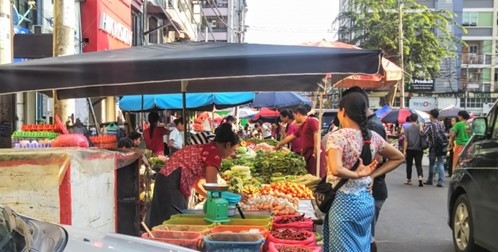
As for contemporary culture, Japanese content, including anime and manga, is popular, but right now K-pop is the big thing. In addition, movies from neighboring India are often shown.
The national character has much in common with Japan. So which comedian is surprisingly popular?
Myanmar people tend to be serious, hard-working, and reserved, so I feel that the national character is relatively similar to that of Japan. A good example of this is the equivalent of the Japanese word "sumimasen." This word is said to be difficult to translate into other languages, but the Burmese language has a word with a very similar nuance, "arnabaday," which also means "excuse me," "sorry for the trouble," and "I apologize."
The people here also seem to have an image of Japan as "a country where cherry blossoms bloom and snow falls," and I feel that they have a special affinity for cherry blossoms. Myanmar has a national flower called the padauk, a small yellow flower that blooms in the new year (April) of the Myanmar calendar and exists fleetingly, falling from the trees after just a day. Perhaps they feel a kinship with the ephemeral nature of Japanese cherry blossoms, which are similar to padauk.
Many people in Myanmar want to travel to Japan, and among the most popular spots to visit is the Great Buddha of Kamakura. In addition to being a Buddhist country, there is a superstition that if you are given a miniature Buddha sold in the precincts of the Great Buddha of Kamakura (Kotokuin Temple) as a souvenir, you will be able to travel to Japan. As a result, it is a popular souvenir, and many Myanmarese people buy large numbers of miniature Buddha statues to take home.
There is also a variety of the traditional clothing called longyi that uses Japanese kimono-patterned cloth called "kimono longyi" which is beloved by many. If you go to the fabric store "Mihama Cloth" in Nishi-Nippori, Tokyo, you can buy fabric for kimono longyi, which is also very popular among visitors.
Aside from travel, what is interesting is the popularity of Shimura Ken's comedies such as Baka Tono-sama! Many videos subtitled in Burmese are shared on social media. The overacting and easy-to-understand humor seems to be well-liked, and when Mr. Shimura passed away, it even made the news in Myanmar.
The number of Japanese language learners is growing so fast, teacher training can't keep up
"Japan is a safe country that successfully developed its economy through the hard work of its people despite its defeat in World War II." From the elderly to the young, people in Myanmar have this kind of good impression of Japan, and many are pro-Japanese. In addition, since Japan is a safe country with relatively good wages and acceptance system, the number of people who wish to leave the country to study or work in Japan has greatly increased.
With interest in Japan growing, the events organized by the Japan Foundation, Yangon to introduce Japanese culture are so popular that they fill up quickly. As it is currently difficult to invite people from Japan, we plan events to the extent possible using the material and human resources available in Myanmar. In January of this year, 600 visitors came in one day to experience Japanese New Year traditions like pounding mochi (rice cake) and playing the card game of karuta. Recently, more and more people are going to various areas of Japan to study or work, so there is a keen interest in local culture as well as in Tokyo and other urban areas, and the event held last year to experience Okinawan eisa dance also drew a large crowd.
The JLPT (Japanese Language Proficiency Test) is offered twice a year, and in 2023, approximately 200,000 people signed up to take it. Worldwide, Myanmar ranks second only to China in terms of the number of people who sign up for the JLPT, and considering that Myanmar is a country with a population of just over 50 million, this is an astounding number. During the period when the number of Japanese companies operating in Myanmar was increasing, the number of Japanese language learners increased in order for people to work for these companies in Myanmar, but nowadays, the majority of the test takers are young people who wish to study or work in Japan. Another background factor is thought to be the sluggish domestic economy.
In addition, the Japan Foundation, Yangon is also focusing on a project to train Myanmarese Japanese language teachers, but the number of Japanese language teachers is also increasing rapidly, and our project has not been able to keep up with local needs. In order to provide proper support for Japanese language education institutions, we believe it is important to first obtain a clear understanding of their actual conditions, so in addition to the global survey conducted every three years which is led by the Tokyo headquarters, Japan Foundation, Yangon also conducts its own survey of the status of Japanese language education institutions and is actively gathering information.
Now that relations with Japan are rapidly approaching, please stay interested in Myanmar!
The culture of Myanmar that I personally would like to introduce to Japan is the tea culture. Japan also has cultural traditions centered around tea, but Myanmar's tea culture is interesting and different from Japan's. First of all, tea is mainly consumed in two ways. One type of tea is not sweet, like Japanese green tea or hojicha. The other is sweet tea with condensed milk, which seems to have been influenced by the drinking of tea with milk introduced during the British colonial period. In addition to drinking, there is also a dish called lahpet thoke, which is a salad made of tea leaves. It is widely loved as Myanmar's national dish and can be found at any Myanmar restaurant in Japan. So please taste the dish.
Finally, Myanmar is a country that has been in a difficult situation since the political upheaval of 2021. Nevertheless, Myanmar-related news reports in Japan have been decreasing. On the other hand, the number of residents in Japan from Myanmar is increasing rapidly, so you may have opportunities to meet Myanmarese people in Japan in the future. The relationship between Japan and Myanmar is developing in a new way, so please do not lose interest in Myanmar. Also, as I said at the beginning, Myanmar is a diverse country with many different ethnic groups, so I would like you to pay attention not only to Myanmar as a country, but also to the backgrounds and unique cultures of the people of Myanmar you will meet in the future. By doing so, I believe you will be able to get a more interesting sense of Myanmar as a country.
The Republic of the Philippines
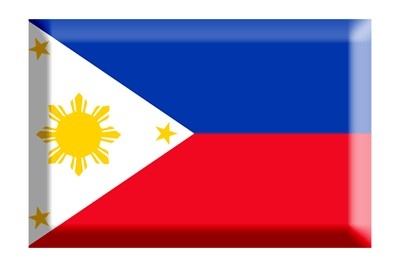
Area:
298,170 km² (approximately 0.8 times the size of Japan)
Population:
Approximately 110,200,000 (2021 estimate)
Capital city:
Manila
Political system of government:
Constitutional republic
Main languages:
Filipino, English
Main religion:
Christianity (mainly Catholic)
Currency:
Philippine peso
Geography
The Philippines is an archipelago nation consisting of more than 7,000 islands, including 11 large main islands. About 2,000 of its islands are inhabited, each with its own history and culture.
History
Starting in the 16th century, it was a Spanish colony for about 300 years, and after 50 years of American rule and Japanese military rule, it became independent in 1946 as the current Republic of the Philippines.
Major industries
The service industry, including business process outsourcing (BPO), accounts for approximately 60% of GDP. In recent years, it has also been exporting processed products such as semiconductors. In terms of primary products, approximately 80% of Japan's banana imports come from the Philippines.
Relations with Japan
Japanese immigration to the Philippines began in the early 20th century, creating the largest Japanese immigrant community in Asia. During World War II, Japanese military rule was imposed, and there are families and their descendants of mixed Filipino-Japanese descent along with their communities who were left behind during the postwar confusion, as well as many Filipinos who came to Japan as laborers during Japan's rapid economic growth period. Today, about 300,000 Filipinos live in Japan.
Highlights of the Philippines:
As told by locally-based Japan Foundation staff
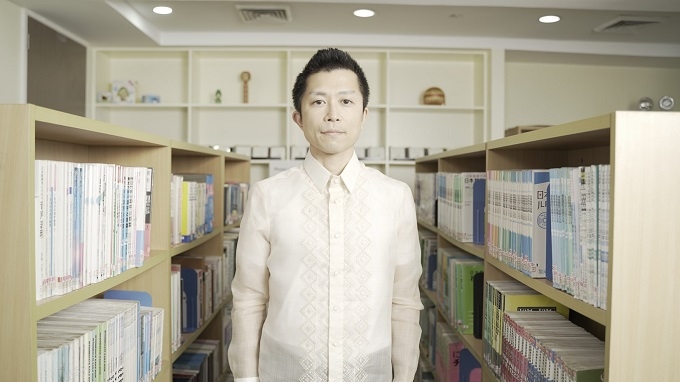
Speaker: Abe Wataru, staff member
He joined the Japan Foundation after working in the private sector. After working at the headquarters in Tokyo, he was transferred to Manila. After three years and four months in the Philippines, he moved to the Japan Foundation Japanese-Language Institute, Kansai in March 2024. He loves Southeast Asia and had traveled there often, but he had never been to the Philippines prior to his assignment.
The Philippines today: Traffic congestion in Manila is the worst in the world! A country where the rules and the actual operation are different
When I was assigned to the Philippines in 2020, the country was undergoing a lockdown due to the COVID-19 pandemic that was unusually severe compared to elsewhere in the world. The airports, streets, restaurants, and shopping malls were sparsely populated, so I could not imagine at all the bustling daily life we can experience today. I was a little concerned about security, but I never felt scared. I've heard it said that this was due to the then Duterte administration's strict crackdown on drug-related crime.
The lockdown protocol was very detailed and strict, with some rules that made me shake my head in disbelief, for instance having to wear face shields on top of masks, and children not being allowed in shopping malls. Having said that, whether all the detailed rules are strictly enforced is another story. There is always a bag check when entering a mall, but I doubt if they are really looking at what's in there. The difference between the rules and the actual operation often leaves me perplexed.
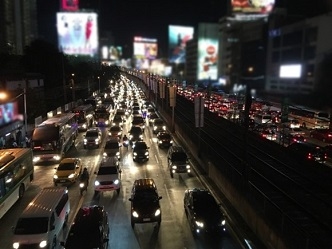
A night-time traffic jam in Manila
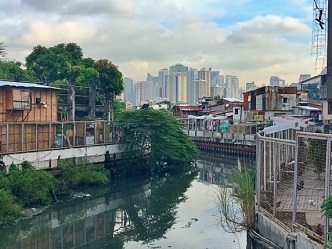
A symbol of this is the way people drive. It seems as if there were no lanes at all, and it is a common scene that everyone tries to be the first to cut in, only to get stuck. Jeepneys, the Philippines' iconic public transportation vehicles, will just stop anywhere to let passengers on and off. It is no surprise that Manila was ranked the most congested city in the world in the global rankings (for the greater metropolitan area).
Filipino is the official language, with English being the second official language. However, because it is a multi-ethnic country, there are many different dialects. For example, the Visayan language spoken in Cebu is sometimes incomprehensible to Tagalog speakers in Manila.
Is the history of foreign rule also a factor? Filipinos continue to search for their own roots and identity
One thing that made a strong impression on me in the Philippines is the tolerance toward children. If a child cries, everyone will help him or her, and you never see someone give a child a cold stare. The reason for this may lie in their lifestyle. For Filipinos, "family" is a broad term, and what we call "relatives" in Japan are all "family." In many cases, everyone lives together. There is a strong sense of community, and in the local areas called barangays (the smallest local government unit in the Philippines), you will often see older boys and girls playing together with younger children of different ages in the alleys where small houses are crowded together. I think everyone is used to small children.
At work, I also sense that there is a bit of authoritarianism and an awareness of hierarchy. As a general rule, people tend to be obedient to the what their "superiors" such as bosses, police officers, and politicians say. The frequent use of "sir" and "ma'am" when people speak is also characteristic. Even in the office, local staff may call you "sir," which is too polite and might make you feel uncomfortable.
This may be due in part to the country's long history of colonial rule, lasting for 300 years under Spain and 50 years under the United States. In fact, "what is the unique culture of the Philippines?" is a theme which is often discussed in the field of arts and culture, which is not unrelated to the fact that the Philippines had been ruled and strongly influenced by other countries. There is also an active movement to protect the traditions and cultures of the country's diverse indigenous peoples.
What is striking in this context is that the national anthem and the flag are very important in the Philippines. For example, at movie theaters, the national anthem is played at the first and last screenings of the day, and you will see many people stand up and sing with their hands on their hearts. I feel that the Philippines, a country made up of diverse ethnic groups and cultures, must always be aware of where it seeks to find its common identity.
Japanese culture is everywhere you look! The way to enjoy it is the Filipino way
Japanese people might be astonished when they find out how pervasive and commonplace Japanese culture is in the Philippines. Not only are many beef bowl chains and Japanese-affiliated izakaya (Japanese-style pubs) popular here, but also locally produced food, daily necessities, and fashion brands have successfully (and sometimes boldly) incorporated Japanese concepts such as "wabi-sabi," "kawaii," and kimono. One of the most impressive projects I was involved in at the Japan Foundation, Manila was the Japanese drumming performance by Wadaiko Yamato in June 2023. I will never forget the enthusiasm of the 4,000 people who came to see the performance in Manila and Davao. Meanwhile, at the JFF (Japanese Film Festival), there was a great response to the free screening of The First Slam Dunk, a movie based on the Slam Dunk manga that is very popular even in the Philippines, where basketball is very popular, attracting so many people that it was impossible to get into the theater! Whether it is a music performance or a movie, people do not hide their emotions when they feel moved, excited, or amused, but let them out and enjoy sharing them with the other audience members, which is one of my favorite things about the Philippines and not found in Japan.
YAMATO LIVE! 2023 Philippine Tour
https ://jfmo.org.ph/events-and-courses/yamato-live-2023-philippine-tour/![]()
Typical anecdotes of life in the Philippines: being flexible, and loving events
When I was buying a baby crib, the shop had the frame for the bed but there were no mattresses in stock, and I was wondering what to do. To my surprise, the shop staff brought in a mattress that was obviously a different size and taken off another bed, and cut it to fit the crib. Once it was done, they delivered it to us. This is something that is hard to imagine happening in Japan, but I think it is a very typical Filipino episode. (However, the stitching of the mattress cover was so crude that it had to be redone, which is also typical of the Philippines.)
In restaurants too, it is an everyday occurrence that a dish on the menu is not available. It is usually quicker to instead ask what they have. And even if something is not on the menu, if you ask about it, they can accommodate you more easily than you might think. If you get stressed about every little thing like this, the wrinkles between your eyebrows will deepen, so the trick to living in the Philippines is to see it as being "flexible."
Also, Filipinos love events. For example, a small child's birthday is a big deal, with trampolines, crane games, clowns, face painting artists, and even food stalls invited to help with the entertainment. When I asked if it wasn't a lot of work, running around here and there, they told me that they would do it even if it was hard work, so I guess they like doing it!
My personal recommendation is to attend a live concert. Even at festivals where about 20 acts perform from morning until midnight over two days, you can hear many of your favorite artists at a reasonable price, starting from 2,000 yen for a seat. However, please be aware that the timetable may not be reliable. Everyone in the Philippines loves to sing and is very good at it, and I hope you have a chance to enjoy the Filipino music scene in person.
Republic of Singapore
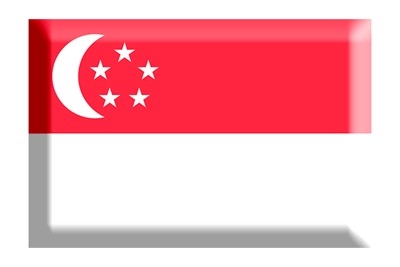
Area:
726 km²
Population:
Approximately 5,640,000 (2022)
Capital city:
N/A as it is a city-state
Political system of government:
Constitutional republic
Main languages:
Malay (national language, official language), English, Mandarin Chinese, Tamil (official language)
Main religions:
Buddhism, Islam, Hinduism, Christianity
Currency:
Singapore dollar
Geography
With a land area about the same size as Tokyo's 23 wards, Singapore is located on the Straits of Johor at the southern tip of the Malay Peninsula. It is also called the "Garden City" for its lush green landscape.
History
The territory ruled by the Johor Sultanate in the 16th century became a British colony, and later became an autonomous state. When Malaysia was established, Singapore joined as one of its states, but was separated and became independent in 1965.
Major industries
High growth was achieved by the electronics industry, followed by the development of high value-added manufacturing, finance, telecommunications, biotechnology, and other industries. Singapore's nominal GDP per capita is approximately 1.8 times that of Japan (in 2021) and the highest among ASEAN countries.
Relations with Japan
In 2002, the two nations concluded the Japan-Singapore Economic Arrangement for a New Age Partnership (JSEPA). This was Japan's first economic partnership agreement, and it is aimed at establishing bilateral economic partnerships including trade, investment, finance, information and telecommunications, and human resources development.
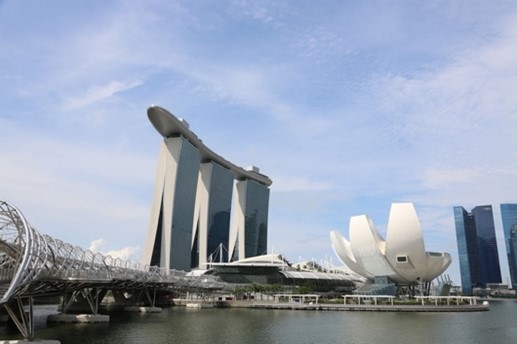 ©ASEAN-Japan Centre
©ASEAN-Japan CentreKingdom of Thailand
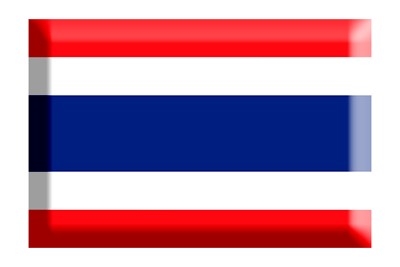
Area
513,120 km² (approximately 1.4 times the size of Japan)
Population
Approximately 66,090,000 (2022, Ministry of Interior of Thailand)
Capital city
Bangkok
Political system of government
Constitutional monarchy (King Maha Vajiralongkorn Phra Vajiraklaochaoyuhua)
Main language
Thai
Main religion
Buddhism
Currency
Baht
Geography
Thailand is a leading tourist destination among the ASEAN countries. In addition to the capital, Bangkok, the country has many tourist resources, including World Heritage sites such as Sukhothai and Ayutthaya, and beach resorts such as Phuket and Pattaya.
History
The current reigning Chakri dynasty was established in the 18th century. In 1932, a revolution changed the country from an absolute monarchy to a constitutional monarchy. Democratization progressed from the 1980s to the 1990s. As the only member of ASEAN that was never colonized, Thailand has developed its own unique culture.
Major industries
Although 30% of the workforce is engaged in agriculture, the manufacturing sector accounts for the largest share of GDP. Tourism is also an important industry, and in 2019, prior to the outbreak of COVID-19, revenue from tourism from abroad was 60.5 billion USD (4th in the world), accounting for about 12% of GDP.
Relations with Japan
Japan and Thailand have traditionally enjoyed a friendly relationship and have a history of exchange that goes back 600 years. The number of Japanese visitors to all areas of Thailand is the largest among ASEAN countries.
Highlights of Thailand:
As told by locally-based Japan Foundation staff
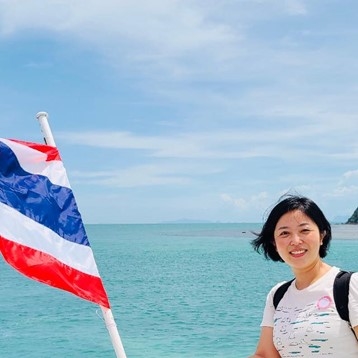
Speaker: Shogase Mari, staff member
After working in Los Angeles and at the Tokyo headquarters, she was transferred to Bangkok. She has been living in Thailand for 4 years.
Thailand today: Is Bangkok even more urbanized than Tokyo? An attractive blend of big city life and tradition
In recent years, Bangkok has maintained its position as the world's second city with the largest Japanese population within a metropolitan area, following Los Angeles. This significant presence suggests that many Japanese people have some sort of connection to Thailand, and this may be one of the reasons why the country is familiar to Japanese people among the ASEAN countries.
When you think of Thailand, images of Thai food, tuk-tuks (three-wheeled cabs), and Buddhist temples might come to mind, but I would like to add that the capital city, Bangkok, is a bustling metropolis. New railroad lines are extended every year, and new buildings and malls are opening. In terms of the pace of development, Bangkok might even surpass Tokyo. The mix of tradition and glamorous urban fun is what Thailand is today.
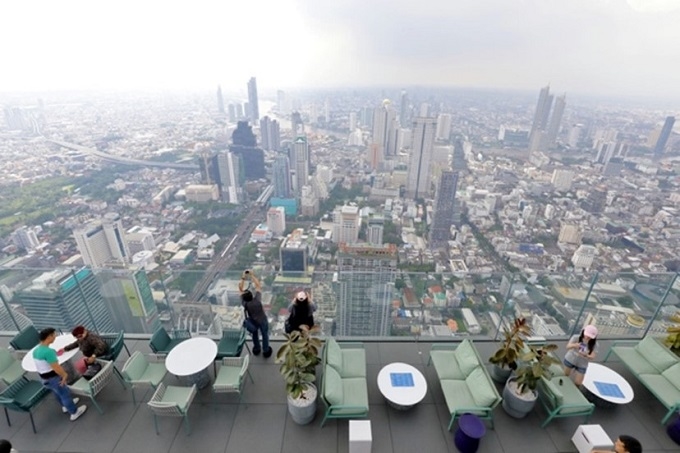 ©ASEAN-Japan Centre
©ASEAN-Japan CentreIndividuals help each another in their daily lives; resonating with a culture of humility and consideration
Thailand is often called the "Land of Smiles," and this is a perfect description. I've always been impressed by how friendly and helpful Thai people are, even to strangers. I feel helping others and seeking help when needed are common practices here.
While this might suggest a close interpersonal distance, Thai people also are deeply respectful, humble, and value self-discipline as well. I heard that from a young age, more so than in Japan, they are taught to avoid expressing anger or complains, and this may have an influence on their behavior.
One situation I found interesting was when I gave out small souvenirs at work. In Japan, I would typically be met with enthusiastic gratitude but surprisingly, the reaction was rather mild. When I talked about this with a Thai person one day, he explained that if people overly express gratitude, it might create a sense of obligation, expecting the person to hand out future gifts. This may be a personal viewpoint, but it was refreshing to hear that some people think this way. It highlights a shared value of consideration for others, even if the manner of expressing that consideration differs between cultures.
As a world-class tourist destination, new content is also being actively promoted
Bangkok consistently ranks highly among the top cities in global attractiveness surveys. It has a large hub airport, and people worldwide find it an attractive tourist destination.
There is also a great deal of active promotion on national level, and I feel that Thailand is flexibly marketing not only its traditional tourist resources such as temples and resorts, but also a wide variety of other contents. For Japan, they are also flexibly promoting a wide range of themes, such as sending idols to Thai festivals, sending actors to promote "BL (boys love) tourism," and inviting pilgrims, and so on.
In fact, the Tourism Authority of Thailand sends a team to Japan's Sapporo Snow Festival every year, and in 2024 they won first runner-up in the International Snow Sculpture Contest.
https://www.snowfes.com/news/874.html![]()
 ©The Sapporo Snow Festival Executive Committee
©The Sapporo Snow Festival Executive CommitteeThere is a deeper understanding that goes a step beyond typical Japanese culture
Bangkok is already overflowing with Japanese content, and the private sector organizes pop culture-related events that draw tens of thousands of participants. There is no doubt that fans of anime, manga, and other such content underpin people's love for Japan, but recently I feel that the resolution is becoming even higher. For example, Thai people enjoy foods like omu-rice (an omelet with rice) that Japanese people do not necessarily consider to be uniquely Japanese, because they find these dishes to be sophisticated and unique to Japan.
I have also heard that Japanese live-action movies are appreciated for their subtlety and uniquely Japanese qualities. Even if they lack any major elements of drama, action, or mystery, there are fans who say that they like Japanese films because they express the way humans live and are heartwarming.
A country where you can feel people's kindness, a long history, and a diverse culture
Not long ago, I was riding in a tuk-tuk when my child's hat was blown off by the wind. I was about to give up as it was impossible to get off and go back, but a nearby street vendor noticed and picked it up. He then passed it to a motorcyclist who happened to be driving by, and the motorcyclist delivered it to my tuk-tuk! This experience made me realize how it is no exaggeration to say that Thai people do not hesitate to lend a helping hand to others and support each other on a daily basis without making a big deal about it.
Thailand has a long history as a nation, and is the sole country in ASEAN that was never colonized. Nationwide the country is highly diverse, with a history of different dynasties, different cultural spheres, different architectural styles, and different foods. Bangkok is a very attractive city, but if you have a chance to visit Thailand, I think you will enjoy getting a taste of the cultural differences in various regions.
Socialist Republic of Vietnam
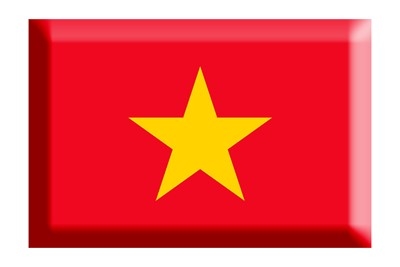
Area:
331,310 km² (approximately 1.8 times the size of Japan)
Population:
Approximately 94,890,000 (2021 estimate)
Capital city:
Hanoi
Political system of government:
Socialist republic
Main language:
Vietnamese
Main religions:
Buddhism, Christianity (Catholic)
Currency:
Dong
Geography
The terrain of the country is long and narrow from north to south, making for much variation. While the northern region of Vietnam has four distinct seasons, the south has a tropical climate. The country also has abundant tourist resources, including historical sites such as the ancient capitals of Hue and Hoi An, as well as Ha Long Bay, known for its strange rock formations.
History
After a period of French colonial rule in the 19th century, the country gained independence in 1945. After the unification of North and South Vietnam following the Vietnam War, the country adopted a socialist system, but a market economy system was introduced in 1986, and the country has achieved economic development through the "doi moi" (reform) policy of opening Vietnam to foreign countries.
Major industries
In addition to agriculture, forestry, and fisheries, Vietnam has achieved export-driven growth by attracting foreign manufacturing companies with its low-cost labor. Textile and sewing products, footwear, cell phones, PCs, electronic devices and their components are the main export items.
Relations with Japan
About a quarter of the foreign workers in Japan are Vietnamese, the largest number by nationality. Meanwhile, Japan also makes up the largest share among countries to which Vietnam dispatches workers (2023). As for study abroad, Vietnamese students account for approximately 70% of all students in Japan who are from ASEAN countries (2021).
Highlights of Vietnam:
As told by locally-based Japan Foundation staff
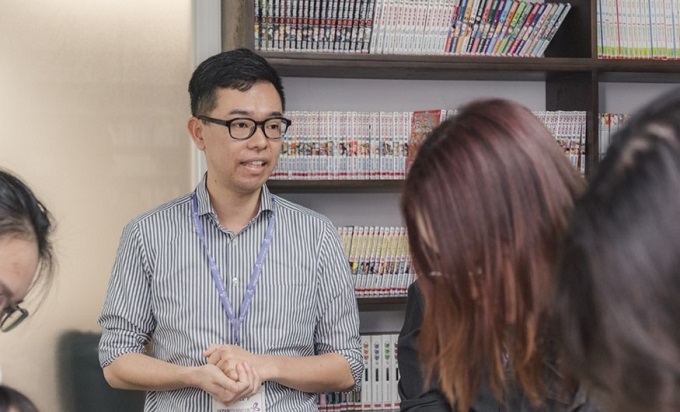
Speaker: Osuka Shoya, staff member
He has lived in Hanoi for about a year and a half. He also lived in Italy for 4 years as a Japanese cuisine chef and in Spain for 6 months while working for a travel agency.
Vietnam today: An interesting mix of skyscrapers and people in "Non La" hats
While Vietnam is a socialist country politically, it has adopted capitalism in terms of its economy, so I basically live my day-to-day life in the same way as I do in Japan. Economically, Hanoi, Ho Chi Minh City, and Da Nang are quite well-developed large cities, with high-rise buildings and, in some cities, subway systems under construction. However, in the midst of such scenery you will still find old townscapes, with people wearing "Non La" (conical hats made of plant leaves) selling goods on bicycles or selling fruits and vegetables under the eaves of buildings in alleyways. I find this gap between a bustling and a rather relaxing atmosphere fascinating.
In terms of culture, the influence of China, which is close to Vietnam geographically, still lingers. The modern Vietnamese language is written in the Latin alphabet, but there was a time when the language was written in Chinese characters ("Han Vietnamese"), and words derived from Chinese still remain. On the other hand, Vietnamese food also features baguettes and stew-like dishes influenced by France, the former colonial power of Vietnam. The fact that these various elements remain is what makes Vietnam interesting.
Vietnam today: An interesting mix of skyscrapers and people in "Non La" hats
While Vietnam is a socialist country politically, it has adopted capitalism in terms of its economy, so I basically live my day-to-day life in the same way as I do in Japan. Economically, Hanoi, Ho Chi Minh City, and Da Nang are quite well-developed large cities, with high-rise buildings and, in some cities, subway systems under construction. However, in the midst of such scenery you will still find old townscapes, with people wearing "Non La" (conical hats made of plant leaves) selling goods on bicycles or selling fruits and vegetables under the eaves of buildings in alleyways. I find this gap between a bustling and a rather relaxing atmosphere fascinating.
In terms of culture, the influence of China, which is close to Vietnam geographically, still lingers. The modern Vietnamese language is written in the Latin alphabet, but there was a time when the language was written in Chinese characters ("Han Vietnamese"), and words derived from Chinese still remain. On the other hand, Vietnamese food also features baguettes and stew-like dishes influenced by France, the former colonial power of Vietnam. The fact that these various elements remain is what makes Vietnam interesting.
Exchange with Japan dates back to the 8th century! International romance in the era of the red seal (shogunate-licensed) trading ships
Although diplomatic relations between Japan and Vietnam were established in 1973, the history of exchange between the two countries began long before that. It is said that figures related to Buddhism started coming and going between the two countries in the 8th century. Records also show that Japanese people came to Hoi An, a town in the central part of the country, during the so-called red seal trade period around the 16th century.
Furthermore, in the 17th century, a Nagasaki merchant named Araki Sotaro, who traveled to and from Japan before the country entered its isolationist period, married a princess from Quang Nam province (present-day central Vietnam). Based on this story, an opera titled "Princess Anio" was produced and performed in 2023 to commemorate the 50th anniversary of the establishment of diplomatic relations between Japan and Vietnam, and the story was also made into a manga drawn by manga artist Higashimura Akiko.
Hoi An Love
https://asiawa.jpf.go.jp/partners/voice/blog/2023_12_25/![]()
This episode is also incorporated into the program for Nagasaki Kunchi, a famous festival in Nagasaki, and is dedicated once every seven years in a performance called Goshuinsen(Red Seal Ships) .
My impression is that there are many people who want to use Japanese for work
I have the impression that Vietnamese people's feelings toward Japan are very positive. For example, I have had the experience of people selling vegetables giving me extra when they found out I was Japanese. I also had a person I passed on the street who knew about the earthquake in Japan at the beginning of the year and asked me if Japan was okay.
Many people can speak Japanese, perhaps because they feel that "using Japanese while working" is beneficial. In Vietnam, foreign languages are studied starting from elementary school, and there are several schools where Japanese is adopted as one of the "first foreign languages," in other words, Japanese is learned before English there. There are many talented people who have studied Japanese at universi ty, and these people find employment in the IT and manufacturing industries, which is probably one of the reasons why Japanese companies are finding it easier to expand into Vietnam.
20,000 people came to see a kyogen performance! Traditional Japanese culture is unexpectedly loved by Vietnamese people
Needless to say, Japanese anime and manga are popular, but when I talk with Vietnamese artists, I find that they have great respect for traditional Japanese arts such as Ukiyo-e. Dolls are also surprisingly loved. When we exhibited Japanese dolls in rural areas, we were able to attract great interest by using the dolls as a "gateway to Japanese culture," even though, unlike in urban areas, many people know nothing about Japan.
Another surprise was when we co-hosted a Kyogen performance with the Embassy of Japan in Vietnam. While we gave a performance in a suburban area, the local government said, "we want to get a lot of people to see it," so they prepared a venue for 20,000 people, and to our surprise, the place was filled to capacity! The Kyogen performers were astonished because they had never performed in such a large venue in Japan! It seemed that many people really enjoyed the performance.
A unique traditional performing art in Vietnam is water puppetry, and the country is putting great focus on it. Perhaps in relation to this, people are also interested in traditional Japanese culture such as Kyogen and dolls.
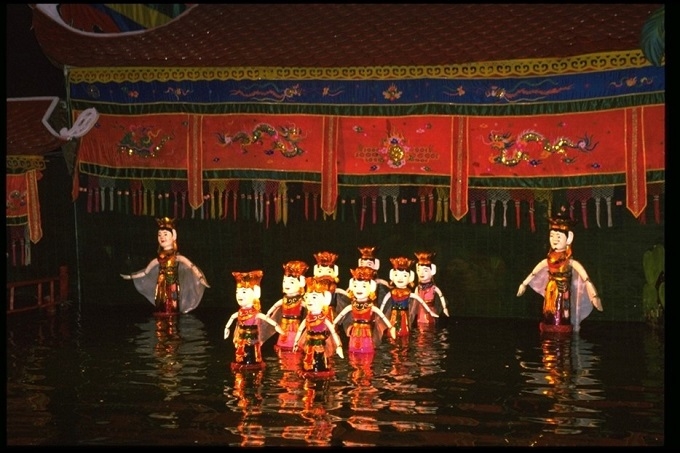 ©ASEAN-Japan Centre
©ASEAN-Japan CentreThe loud noise at 5 a.m. is another case of "same here." A big group all eating from one pot is another custom
Scenes of loud karaoke in public places or loud radio exercise programs at 5:00 in the morning are commonplace in Vietnam. I imagine that the reason behind this is the desire to enjoy the moment and live life to the fullest. Incidentally, if you ask Vietnamese people if they are bothered by such loud music, they actually do mind it! However, they seem to have a sense of "it can't be helped" with one another.
My personal recommendation is to try a hot pot dish. Vietnamese people love hot pot, and they eat it even in the middle of summer, while sweating. To begin with, there is a custom in Vietnam of eating together with many people, and while I was eating alone, as in Japan, the person next to me was concerned and asked me, "are you okay, do you want to eat together?" Furthermore, the dish that is synonymous with "eating with many people" is hot pot, which is often eaten in groups of 10 or even up to 30 people. It is a custom that clearly shows the importance Vietnamese people place on relationships with others, and I myself have seen the breadth of my work expand through the relationships I have formed on these kinds of occasions.
As for public safety, of course you need to be careful in some places, but Vietnam is basically a very safe country, and you don't even hear many stories about pickpockets. However, traffic safety is a completely different story! Motorcycles come and go at a very fast pace, and traffic lights are almost non-existent, so when you come to Vietnam, I would suggest that you just be careful to avoid getting in any traffic accidents.
Interviews and text: Kimura Yasuko
Keywords
Back Issues
- 2024.10.25 My Life in Japan, Li…
- 2024.5.24 The 50th Japan Found…
- 2024.5.24 The 50th Japan Found…
- 2024.5. 2 People-to-People Exc…
- 2024.5. 2 People-to-People Exc…
- 2023.12. 7 Movie Theaters aroun…
- 2023.6.16 The 49th Japan Found…
- 2023.4.24 The 49th Japan Found…
- 2022.12.27 Living Together with…
- 2022.12.27 Living Together with…



